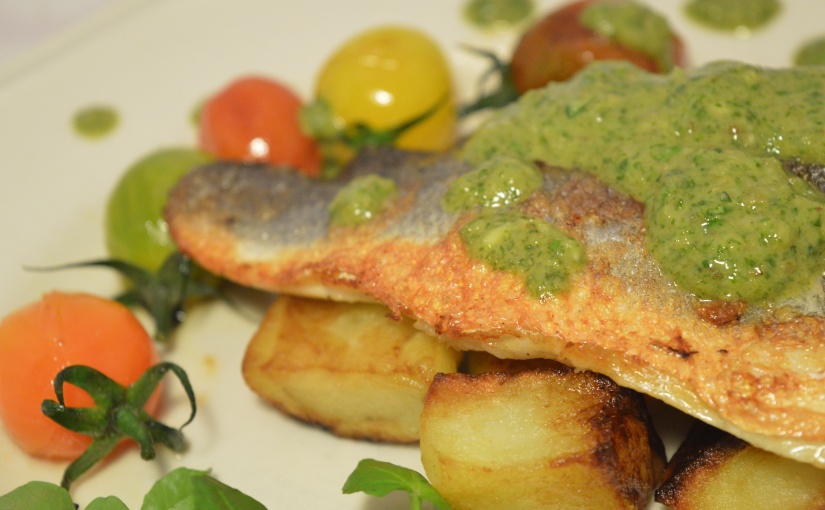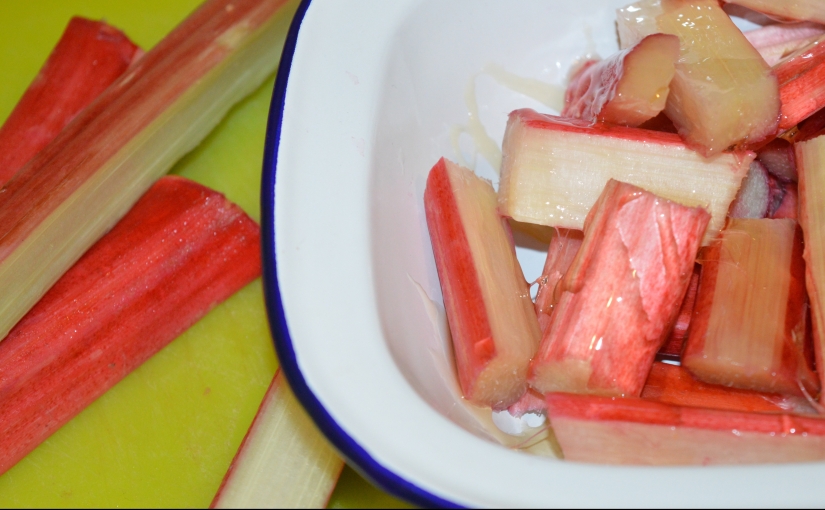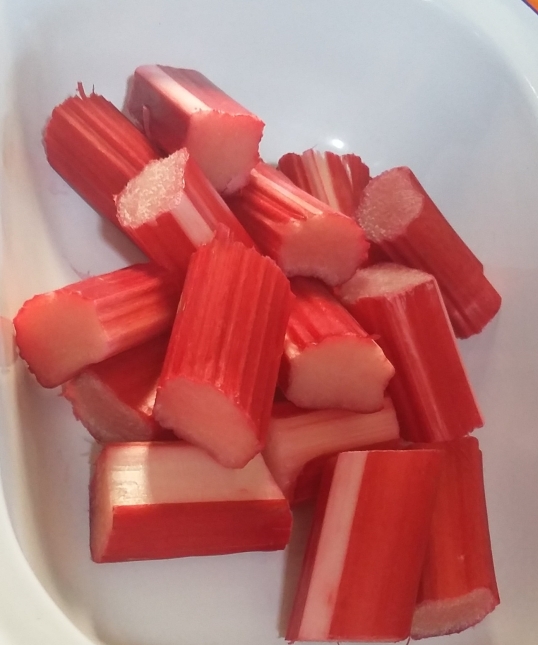Growing up in England on Saint Patrick’s Day we were allowed to ditch the drab, brown school uniform and dress in every shade of green. We were variously adorned with tricolour rosettes, green ribbons in our hair and wilting shamrock, which had barely survived the postage from our Granny in Ireland! I loved this day – as a “Patricia” it was after all my Saint’s day – and I have great memories of all night singing and shenanigans with lots of friends and family. It felt special to be one of the many Irish at our school of Poles, Italians, Ukrainians, Scots and even the odd English kid. When we had our own family we would still pick up a job lot of those Irish rosettes from the “Nuns’ Shop” for the next generation to wear to school and I always cooked some sort of green white and gold meal. I still do.
At this time of year, I sow a couple of rows of Parsley in the garden. But to be honest I can’t seem to stop growing the stuff year round in West Cork. My Gigante flat leaf parsley has kept producing outdoors over winter with no protection – it seems to love the mild damp climate. My neighbour Kate said that a house where parsley grows freely is a house where the woman wears the trousers and she gave me a knowing look. And my Mum always said you were a very lucky person if you could grow parsley, and that you should always plant it on Saint Patrick’s Day. She would pour a kettle of boiling water over the soil where it was to be sowed – advice I still follow today.
So, because I have to deal with a constant, overwhelming supply of the green stuff I am always seeking out recipes that use loads of it. My recollections of parsley as a child are as a garnish at the butchers, paired with thyme in stuffing or in a thick parley sauce to go with boiled ham or white fish – none of which are particularly inspiring. However, thankfully there are lots of other ways of using great bunches of this fresh smelling herb.
The Italians use large quantities of parsley in two vivid green sauces. These sauces are for dressing the dish just before serving – a culinary “wearing of the green” if you like. It is said that parsley is widely used with garlic to prevent “garlic breath” – I don’t know if there is any evidence for this but both recipes certainly contain plenty of both. The first sauce I am going to make is Gremolata –an easy, easy traditional addition to the classic Osso Bucco (slow cooked shanks of veal in a rich red wine sauce) but here I am going to use it to give last minute colour and zing to my slow cooked Beef in Porter.
You will need:
- 750g Shin of Beef cut into chunks
- 2 large leeks
- 3 sticks of celery
- 2 cloves garlic
- 4 bay leaves
- I large sprig fresh thyme
- 50Oml Porter
- 500ml good beef stock
- A large bunch of parsley, a clove of garlic and the rind of a lemon for the Gremolata.
Pre-heat the oven to 160 degrees. In a large oven proof casserole lightly fry the finely chopped leeks and celery. Add two crushed cloves of garlic, the bay leaves and the thyme.
Brown off the beef in a frying pan with a little oil – ask your butcher to cut it into chunks for you. I always use shin for this sort of stew because it is particularly suited to long slow cooking and will be deliciously tender. Add the beef, the porter and the beef stock to the leeks and celery. Bring to the boil, put the lid on and transfer to the oven.
Cook for at least three hours, turning down the heat to 150 degrees after the first hour.
About 10 minutes before serving take the large bunch of flat leaf parsley and chop very finely. Place the parsley in a bowl and add the crushed clove of garlic and the finely grated rind of a lemon. Mix very well. That is it.
The Gremolata is served over the beef. Just a teaspoon sprinkled on top adds a really fresh, zesty note to this rich, dark stew and introduces some beautiful colour to the dish, which I serve with buttery mashed potatoes.
![DSC_0215[1]](https://reddoorfoodie.files.wordpress.com/2017/03/dsc_02151-e1489358466811.jpg?w=660)
You will need:
- A large bunch of parsley
- A few fresh mint and basil leaves.
- 2 cloves of garlic crushed
- A tablespoon of Dijon mustard
- 2 anchovies,
- Juice of one lemon
- A gherkin finely chopped
- A tablespoon of capers finely chopped
- Two tablespoons of good olive oil
- Salt and pepper
I combine all these ingredients in a pestle and mortar but you can a blitz them with a blender. Just don’t over-blend because you don’t want this to be smooth.
![DSC_0173[1]](https://reddoorfoodie.files.wordpress.com/2017/03/dsc_01731-e1489359369264.jpg?w=660)
You will end up with a wonderful pungent green sauce that lifts whatever it is added to. For Saint Patrick’s Day I am serving this with pan fried sea bass fillets with lovely crispy skin, roasted cherry tomatoes and mini roast potatoes. The Salsa Verde is added just before serving for maximum colour and freshness. This is a firm favourite at our house with steak and spuds, with lamb and ratatouille or pretty much any fresh fish.
So on Thursday don’t forget to sow some lovely flat leaf parsley in your vegetable plot, and when you don the customary green leprechaun hat, a large tricolour rosette, and your bunch of shamrock consider giving your food a vivid green topping to match for the occasion.
Happy Saint Patricks’ Day.



 My polenta cookies are based on an old Jamie Oliver recipe which I have used for years as an accompaniment to roast, poached or macerated fruit. The golden biscuits take flavours well and are great with lemon rind replacing the orange to accompany Strawberries or blackberries and delicious with baby figs poached in Marsala wine and cinnamon. I’m making them with gluten free flour but feel free to use standard flour.
My polenta cookies are based on an old Jamie Oliver recipe which I have used for years as an accompaniment to roast, poached or macerated fruit. The golden biscuits take flavours well and are great with lemon rind replacing the orange to accompany Strawberries or blackberries and delicious with baby figs poached in Marsala wine and cinnamon. I’m making them with gluten free flour but feel free to use standard flour. Of course while that Roast pork is slowly cooking and crisping, you have to serve something to whet the appetite. So we are mixing the spare rhubarb, honey and orange syrup from your oven proof dish with a very good slug of Dingle Gin, over ice, topped up with Fevertree tonic and served with a segment of orange and a pretty stick of rhubarb for swizzling. All of which takes me right back to 1971 and that early memory of rhubarb. But I can tell you that this tastes a darned sight better.
Of course while that Roast pork is slowly cooking and crisping, you have to serve something to whet the appetite. So we are mixing the spare rhubarb, honey and orange syrup from your oven proof dish with a very good slug of Dingle Gin, over ice, topped up with Fevertree tonic and served with a segment of orange and a pretty stick of rhubarb for swizzling. All of which takes me right back to 1971 and that early memory of rhubarb. But I can tell you that this tastes a darned sight better.